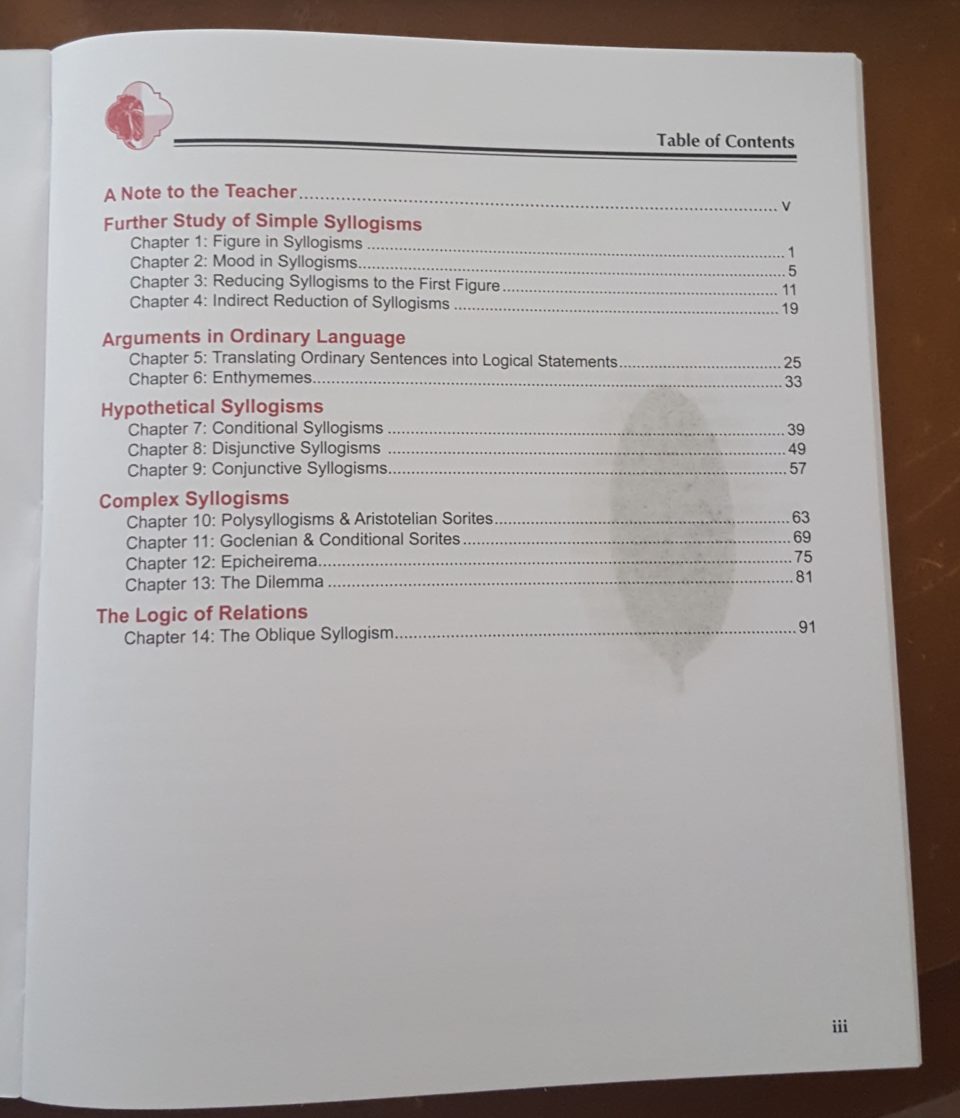My children love logic, and so we were all excited to have the opportunity to review the Traditional Logic I Complete Set and the Traditional Logic II Complete Set from Memoria Press
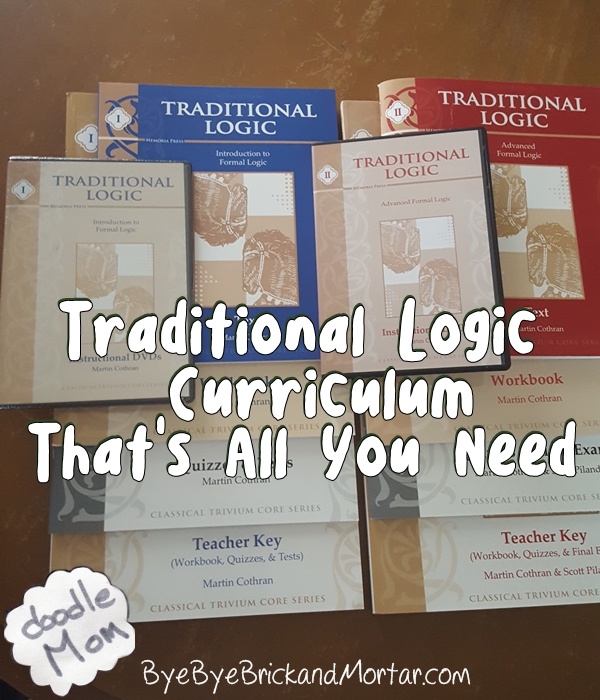 Traditional Logic Can Be Daunting To Teach, But Memoria Press Makes It Easy
Traditional Logic Can Be Daunting To Teach, But Memoria Press Makes It Easy
If you do not have a background in logic, it can be difficult to reach back into the recesses of your brain and pull out those logic principles you learned in high school or college. Memoria Press offers a complete 2-course set that will allow you to teach traditional logic to your children, no matter how much you remember.
Will It Enhance Your Homeschool
What You Get
Each course, Traditional Logic I and Traditional Logic II, is designed in the same way in terms of the components required to teach and the pacing and manner in which you progress through the material. The only difference between the two is the content to be learned.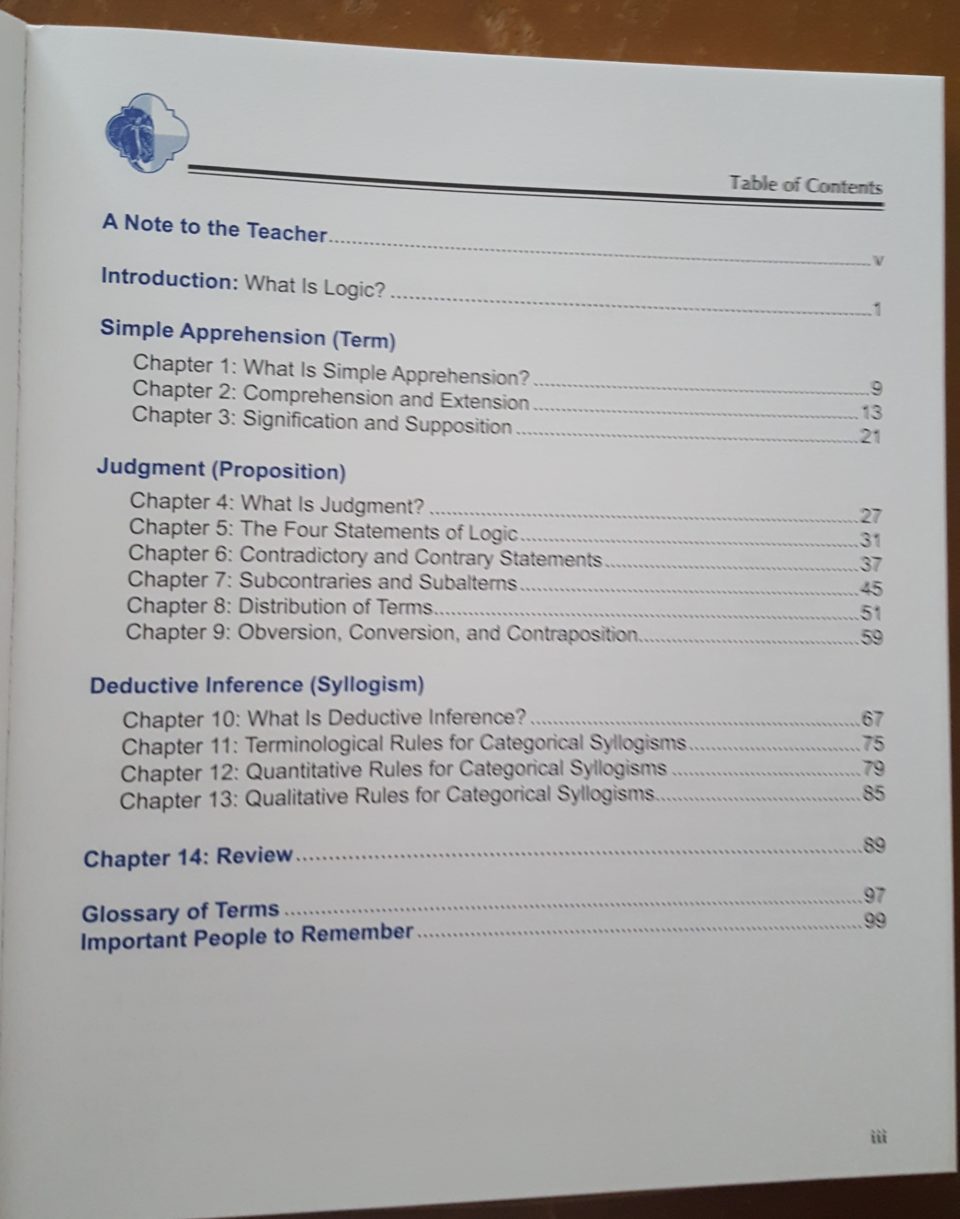
Student Text
The text begins, as all Memoria Press texts begin, with a note to the teacher that will provide you with an overview for how to teach and which materials to use when with your child. The meat of the text is divided into chapters which cover one basic topic to be learned each week.
Instructional DVDs
The instructional DVD set includes lectures by the author, Martin Cothran, which cover each of the chapters in the Text. He explains the material in a conversational manner which parallels the text, but does not exactly repeat the material from the text.
That way your child can watch the DVD and read the text and not feel ask if he is hearing exactly the same thing twice.
Workbook for the student
Each chapter in the workbook allows your child to practice the logic learned in the chapter reading for the week. Generally the workbook exercises are divided into sections that cover three days worth of work. On the fourth day, your child takes a quiz for that Chapter which is found in the Quizzes and Final Exam book. If you would like, however, you can use the fourth day to have your child re-read the text or re-watch the video for that particular week and then have him take the quiz on the fifth day. Overall, there are many flexible ways you can adapt the material in the course to adjust to your child’s learning style and interest.
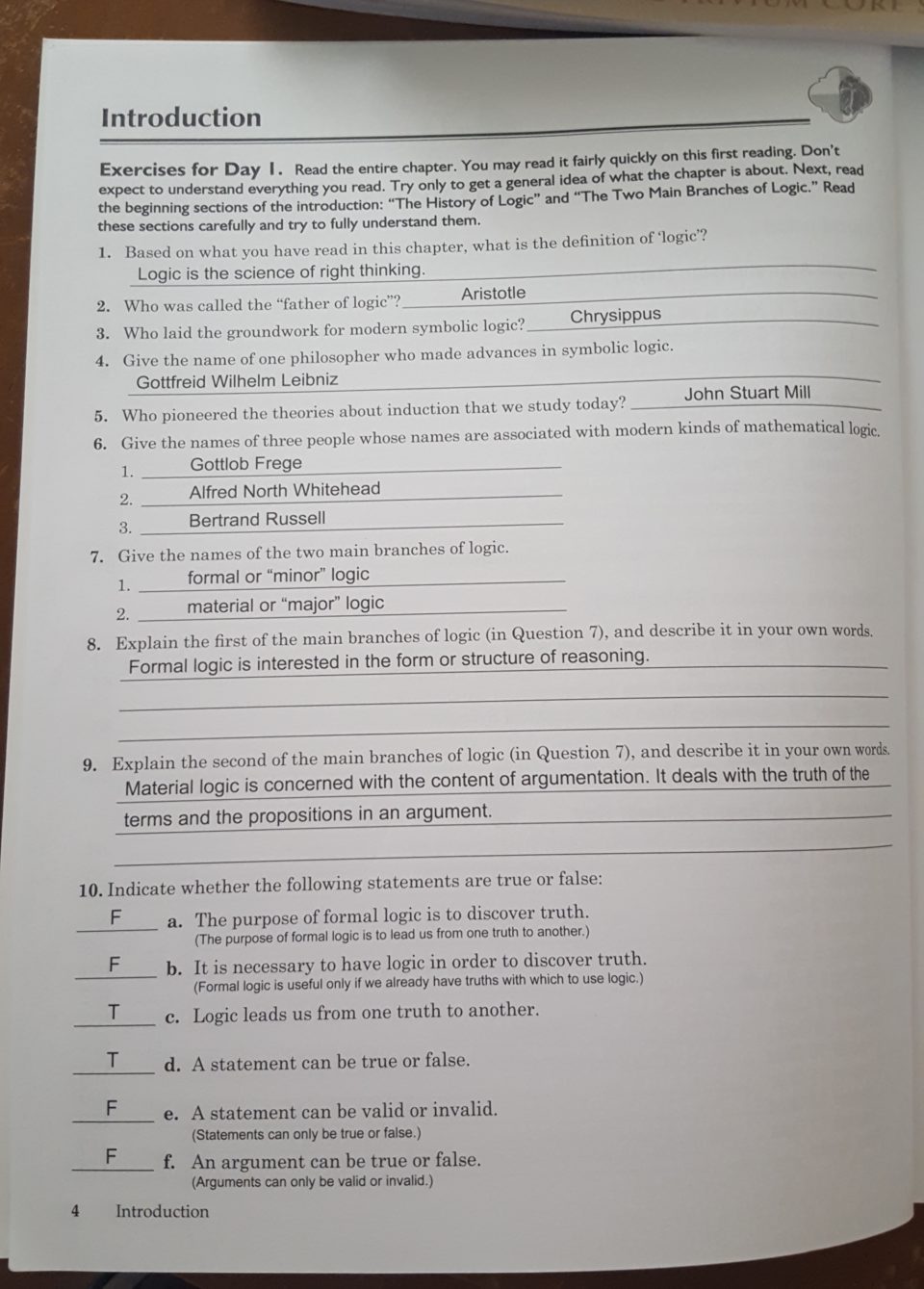
Quizes & Final Exam Book
The quizzes and final exam and printed on perforated paper so that you can easily remove a page to allow your child to take a test. Each quiz is short and is printed on the front and back sides of one piece of paper in the book. It is also designed so that you can easily grade the quiz even if you are not a logician by vocation or trade. And there is a handy place at the top of the paper to record the date and score, or grade for easy record-keeping.
Teacher Key
The teacher key contains everything you need to grade the workbook exercises, quizzes, and the final exam.

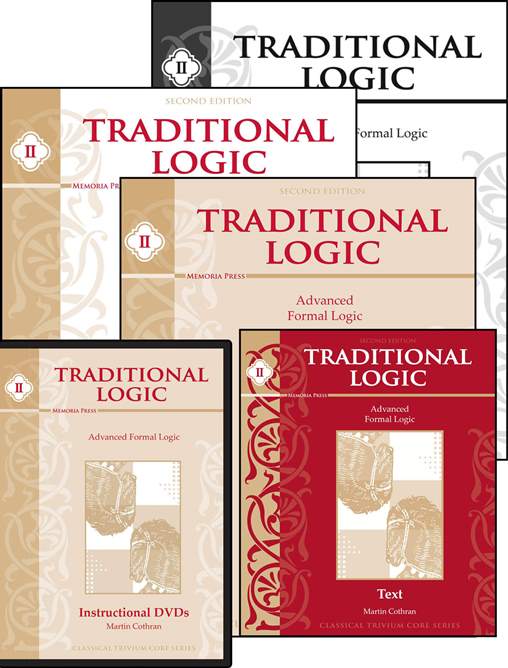
Typical Week Teaching Traditional Logic from Memoria Press
Time Required to Teach Lessons
If you use all the materials that come with this curriculum as suggested in a homeschooling setting, you will find you spend about an hour a week prepping and teaching. Your child will work through lesson exercises
- Time Spent By Yourself Preparing: 20-30 minutes (I used this time to read through the lesson completely as well as the workbook exercises and watch the instructional video)
- Instructional Video: You can use this as a reference for yourself, or in place of teaching you would do with your child. Each lesson is between 20 and 30 minutes long and the examples given go beyond the scope of the text book so it can easily be used in addition instead of in place of the other materials. (2 DVDs)
- Reading Lesson: 20-25 minutes (this can be done with your child, or on their own if you have a child who prefers to work independently)
- Time for Student to complete daily workbook exercises: 20-30 minutes
- Time to Grade Lesson: 5-10 minutes
Overall time you spend weekly: 1 hour – 1.5 hours each week (your child spends an additional 1.5-2.5 hours each week combined)
How Many Days A Week Are Required?
This course is designed so that your student will complete one lesson-chapter each week and your child can work daily for 4 or 5 days each week depending on your preference. You begin the week by reading the text in the chapter and watching the corresponding lesson on the instructional DVD. Then the three following days are spent doing workbook exercises, followed by an optional day to review and a final day for a quiz.
Assigning High School Credit
Each course is the equivalent of 0.5 units of high school credit and it is easy to complete both courses in one year, for a combined 1 unit of traditional logic.
Prerequisites For This Curriculum
Your child needs no other prerequisites than an understanding of grammar (e.g. knowing what a copula is) and the maturity to discuss ideas and concepts such as abortion, teen pregnancy, illegal immigration, and martyrdom
How We Ended Up Using The Lessons
I have been working with my children through a comprehensive Traditional and Modern logic text for the last several years. They are almost through the material, but I was concerned that my kids might be missing some of the vocabulary and terms common to a solid knowledge of traditional logic. Happily, the series from Memoria Press does an excellent job of covering the historical background and terminology of the logic of the ancient philosophers and medieval logicians.
We used the lessons as a review of concepts my kids already know and focused in on sections in the two courses which provide the historical background such as the mnemonic created by William of Shyreswood to name the valid syllogisms which is not typically included in many college-level logic texts these days.
Because my children already knew most of the material in these two courses, we were able to work all the way through both during the review period.
How We Liked It
My children enjoyed the conversational tone of the texts and the interesting examples in the problem sets drawn from literature and the Bible.
I did discover that in the Traditional Logic II Instructional DVD, the author makes an error in explaining how to create a prae-prae syllogism starting with the concluding statement. Instead of constructing a prae-prae syllogism, he shows the creation of a sub-prae syllogism but describes it as a prae-prae, as far as I can tell. That said, the author invites students and teachers who discover errors in these courses to share them so that the next edition of the curriculum can be corrected.
Summary of Traditional Logic I Complete Set & Traditional Logic II Complete Set from Memoria Press

General Features
- Easy to Adapt To Your Homeschool and Your Children
- In most cases, you need to work with your child to teach this curriculum
- Works with Gifted Children
Works with these Age Ranges
- High School (9-12)
- Middle School (6-8)
Good For These Educational Styles
- Charlotte Mason
- Classical
- Eclectic
- Relaxed
- Traditional (like public school)
Subjects Covered
- Logic
For Kids Who Like
- Working with Mom
- Doing Some Work Alone



